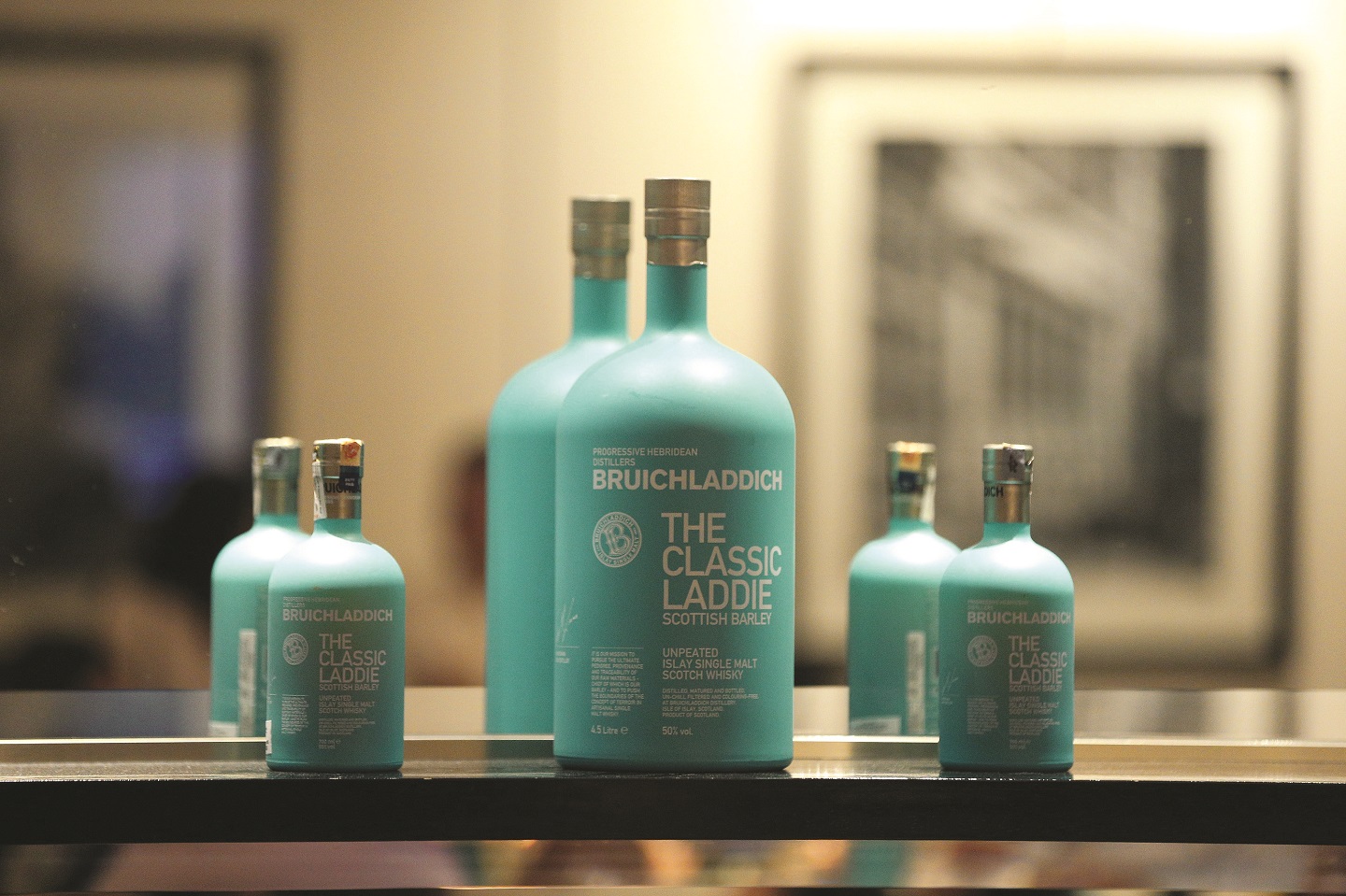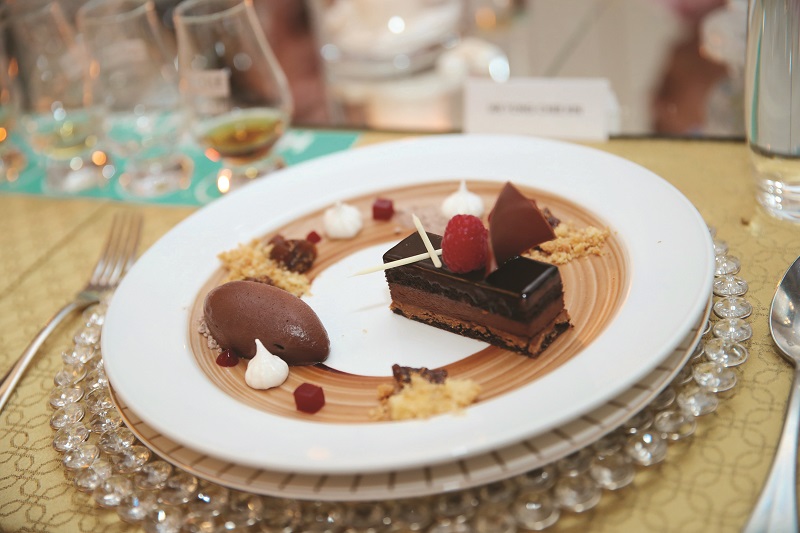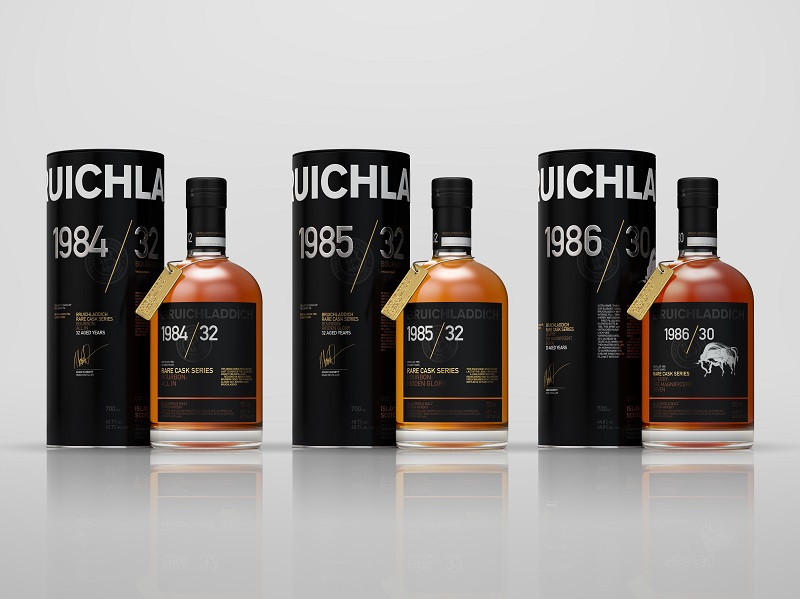
Bruichladdich means “hill beside the shore”, as the distillery is right beside the sea (Photo: Bruichladdich)
Also known as the “Queen of the Hebrides”, the isle of Islay is the fifth largest Scottish island. Populated by more sheep than people, Islay is famed for its smoky, peaty whiskies. Only two distilleries grow their own barley on the island itself: Kilchoman and Bruichladdich. Distilled purely from Scottish barley, Bruichladdich’s range is a surprise as it is completely unpeated. At St Regis KL, we were introduced to head distiller Adam Hannet’s Rare Cask Series, which comprises the 1984, 1985 and 1986 distillations, and sampled other Bruichladdich whiskies paired with a sumptuous four-course meal.
Brand ambassador Chloe Wood talked us through the tasting. “We say terroir matters, which means that it is all about Scotland, as in where our raw material comes from. We actually get 30% of our annual production of barley from the island and the other 70% is all from mainland Scotland. A lot of people focus on the age of the whisky and the cask type but what is really important is the raw ingredient,” she says. At 23 years old, Wood is the youngest global brand ambassador and, although she is a native of Islay, she didn’t learn to appreciate single malts until she began working with whisky a few years ago.
She tells us that Bruichladdich means “hill beside the shore”, as the distillery is right beside the sea. The first single malt, the Classic Laddie, is paired with foie gras, artichokes and a pear chutney. The aqua blue bottle the whisky comes in was created to match the beautiful summer skies of Islay. “Light, elegant and a fruity whisky with a little bit of spiciness on the end there,” says Wood.

The next course was Hokkaido scallops wrapped in bresaola with sweet pea puree and shallot pickle. This dish was served with the Bruichladdich Islay Barley 2010, which is distilled from barley grown by the eight family farms on Islay.
“This is really special to me because the barley comes from farms that are about a 5 to 10-minute drive from where I have lived my whole life,” Wood says.
The Islay Barley is a six-year-old whisky, younger than the usual malts. “Normally, whisky is 10 years plus. Bruichladdich is known for doing younger whisky because we really want you to taste the barley and the spirit that you are going to be drinking. We also focus on the cask type,” Wood says.
Served with the main of roasted jumbo quail, smoked porcini puree, cepes comfit, truffle oil and chicken jus was the Bruichladdich Black Art 5. This whisky is Hannett’s first as head distiller and it is a delicate, sweet and fruity single malt that is aged in the finest American and French oak. Jim McEwan, Hannett’s predecessor, began the Black Art series to try something different. “This is the only whisky at Bruichladdich where we don’t tell you anything except for the age and the abv (alcohol by volume), because that is legally what we have to do. We don’t tell you the cask type or anything else ... It gives the head distiller the chance to be unbelievably creative but keep something to himself,” Wood says.

Finally, we had a dessert of feuillantine entremets, figs and raspberry chocolate sorbet. We ended the evening with an opportunity to sample the Bruichladdich 1986, the youngest of the Rare Cask Series. Paired perfectly with the chocolate, the 1986 has sweet notes reminiscent of Christmas cake, dried figs and raisins. Wood says, “Adam [Hannett] wanted to showcase what stock we had left in the warehouse. What is even more rare is that they are the very last bottles from these vintage years. We have used all the casks we had left to make these three whiskies.”
A trilogy to treasure
Head distiller Adam Hannett describes the Rare Cask Series as “the last of their kind”. Here are a few facts about these exemplary and limited drams.

1984
This whisky is drawn from the very last 12 casks of classic bourbon from 1984, aged for 32 years. Like all Bruichladdich single malts, it is colouring free and without chill filtration. It has a limited release of 3,000 bottles.
1985
Aged for 32 years, this single malt is from the final 22 casks of the 1985 legacy stock. Matured in refill bourbon casks until 2012, it was recasked into fresh bourbon casks and, finally, in French oak from a great French château.
1986
Derived from the last seven casks from 1986, this single malt was matured until 2012 in Oloroso casks, then recasked into Pedro Ximenez casks from Fernando de Castilla. Aged for 30 years, this whisky has a natural strength of 44.6% abv.
This article first appeared on Sept 3, 2018 in The Edge Malaysia.


